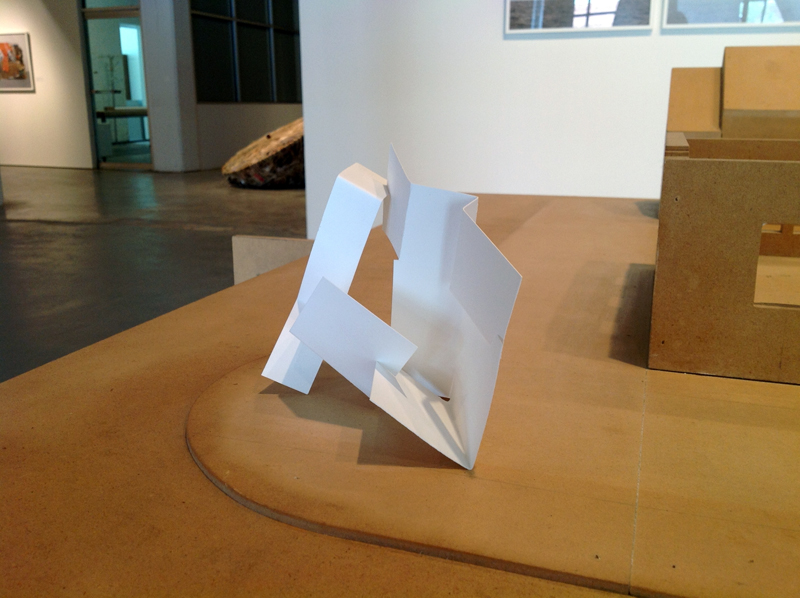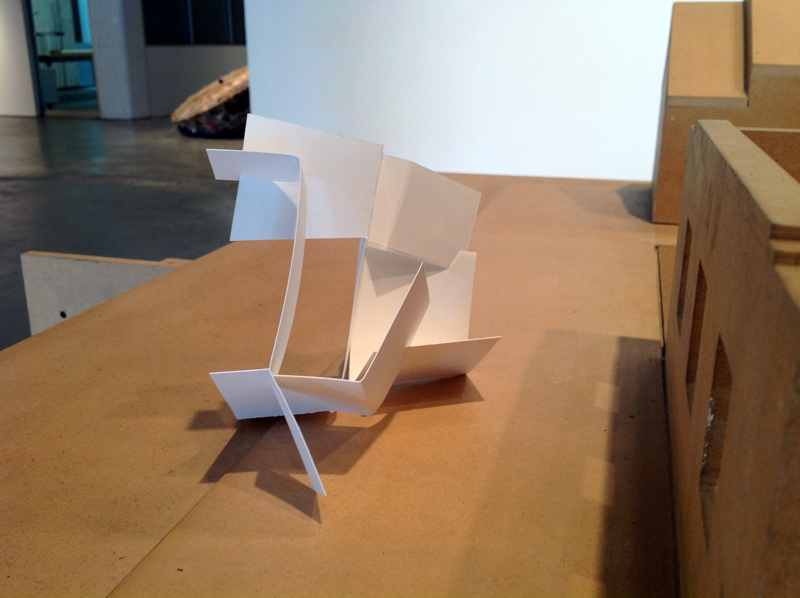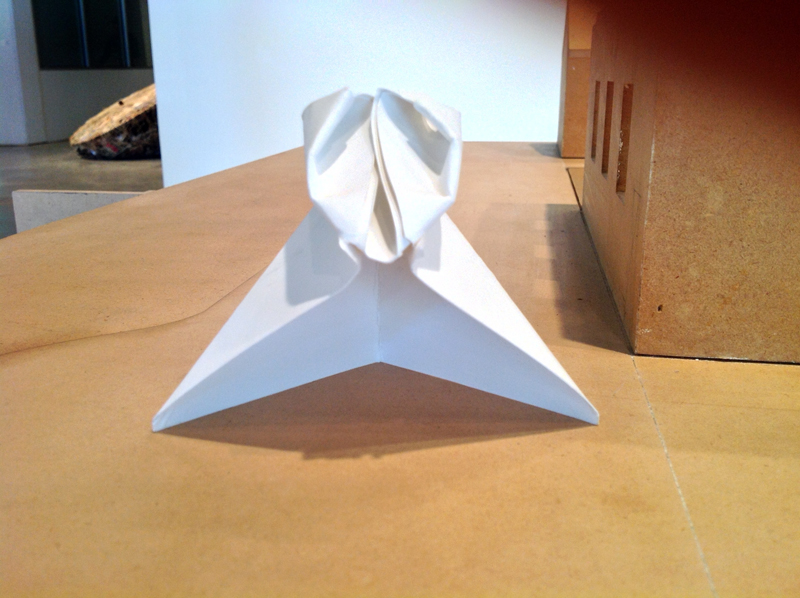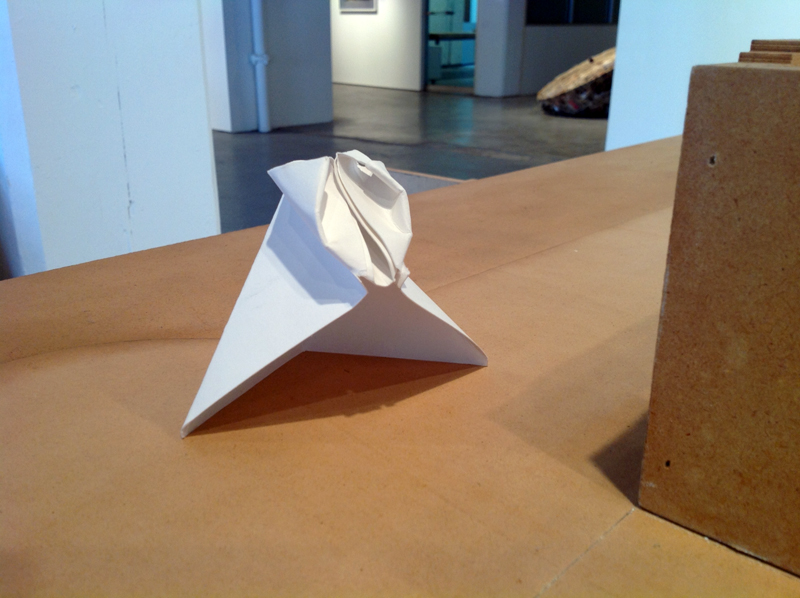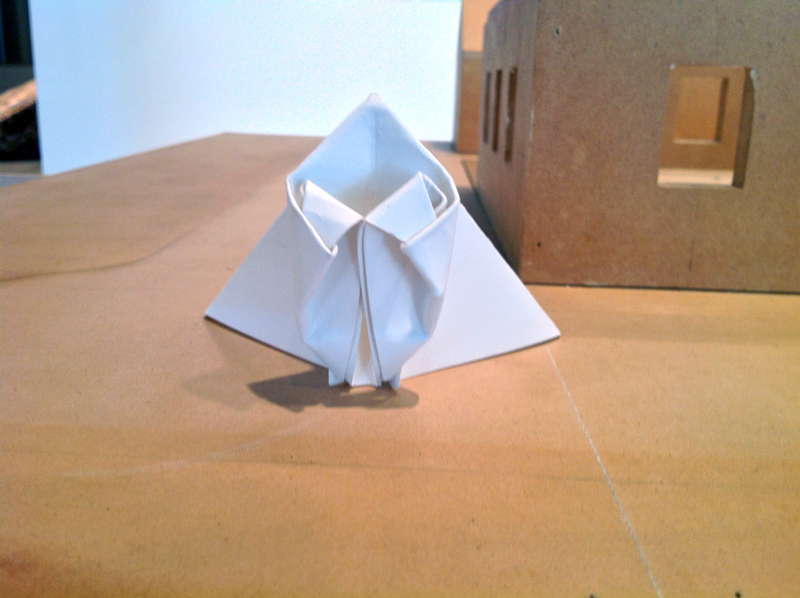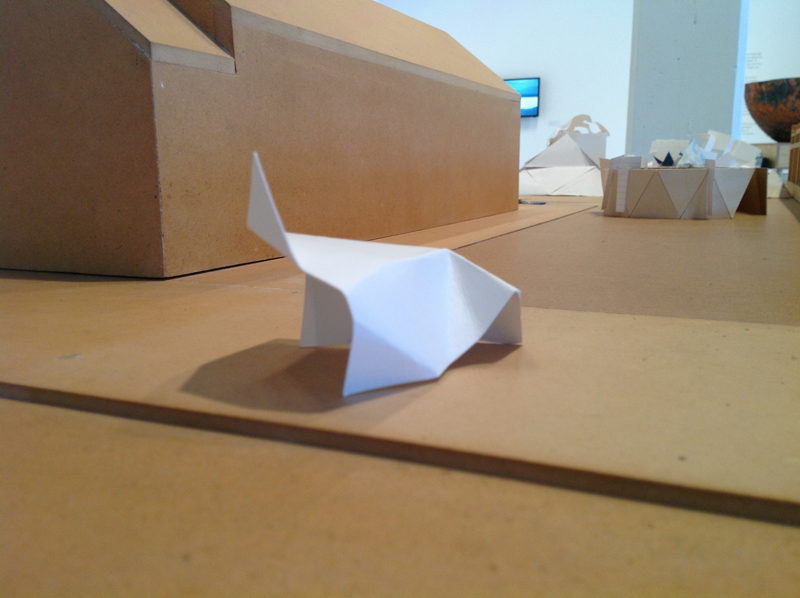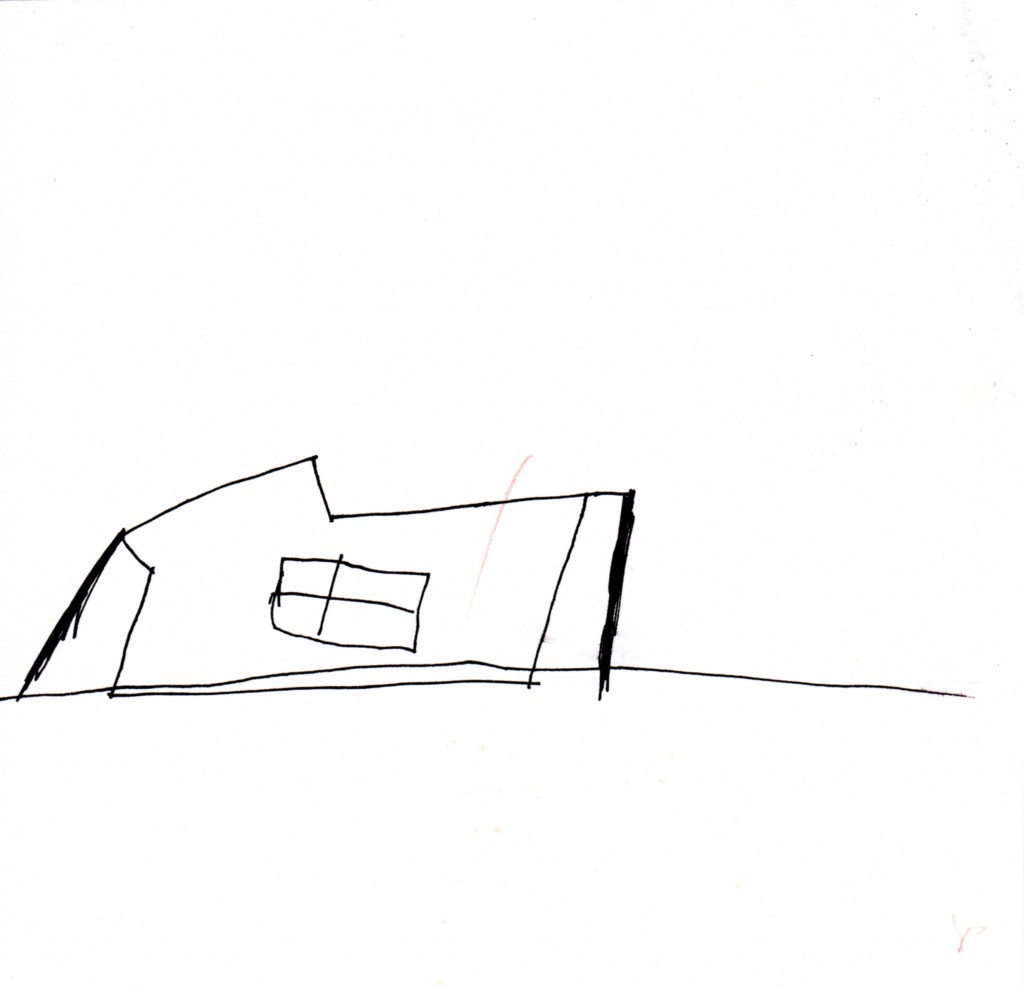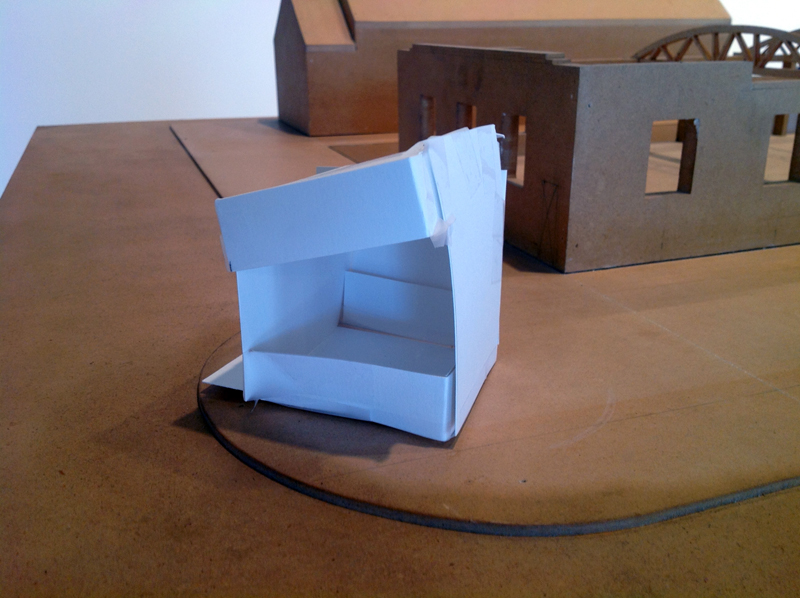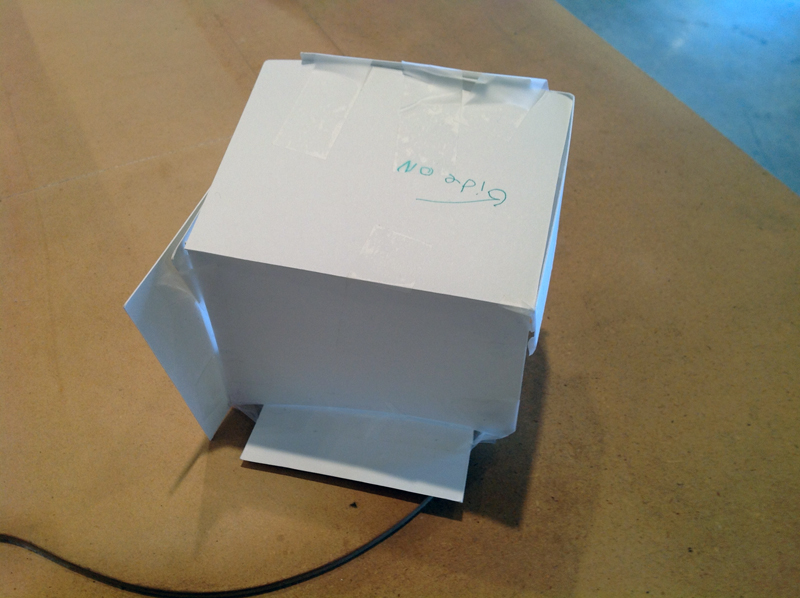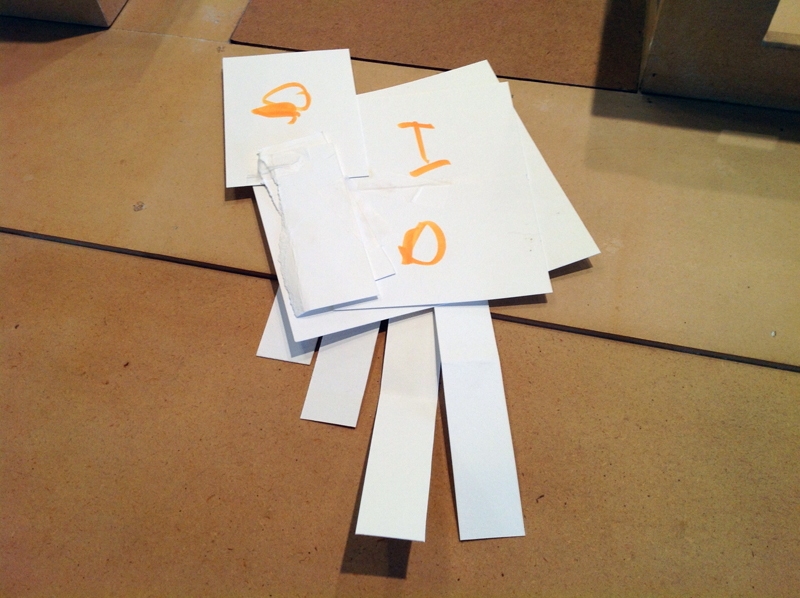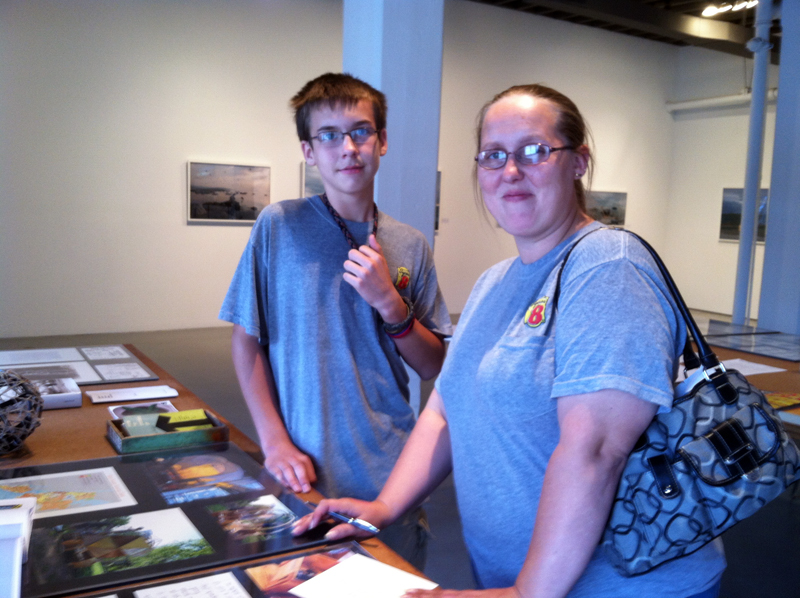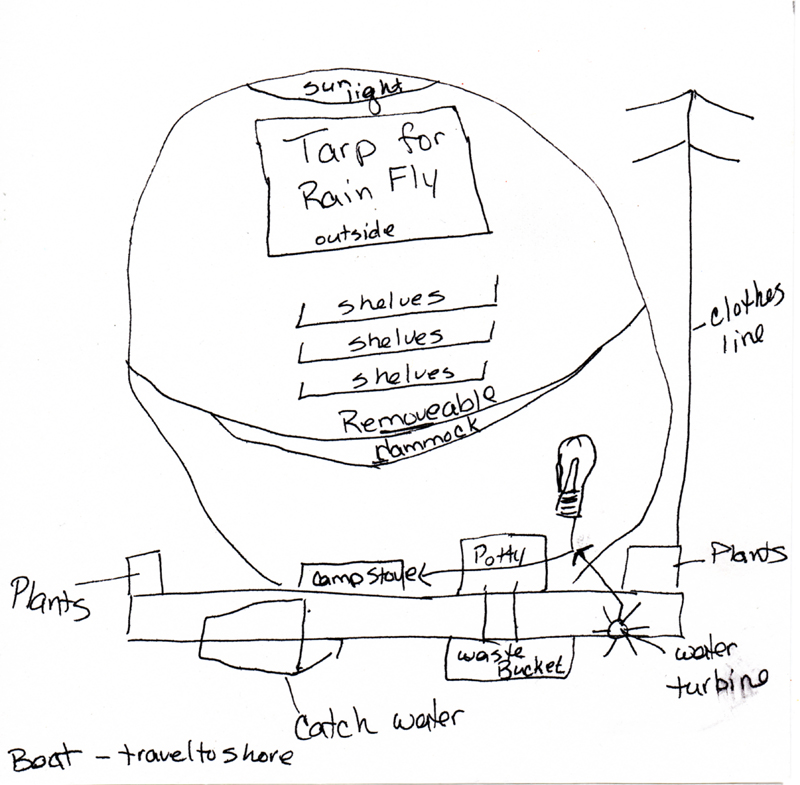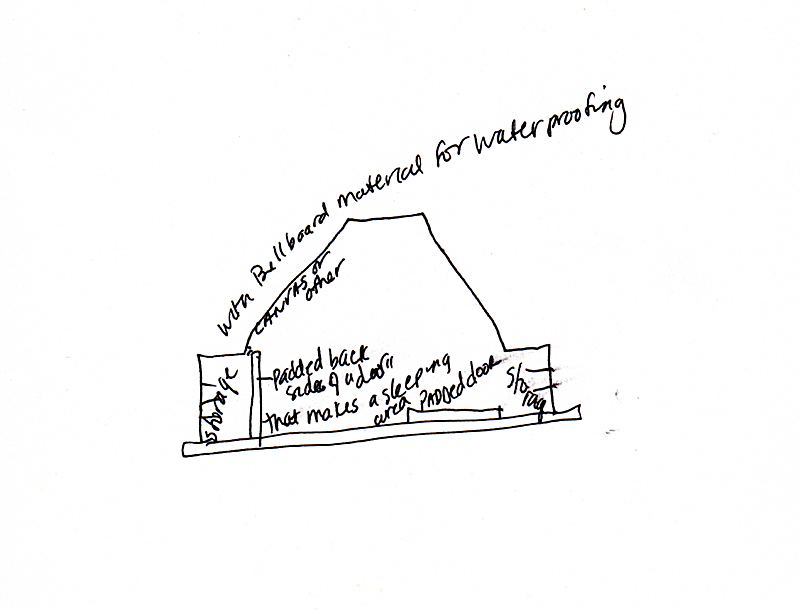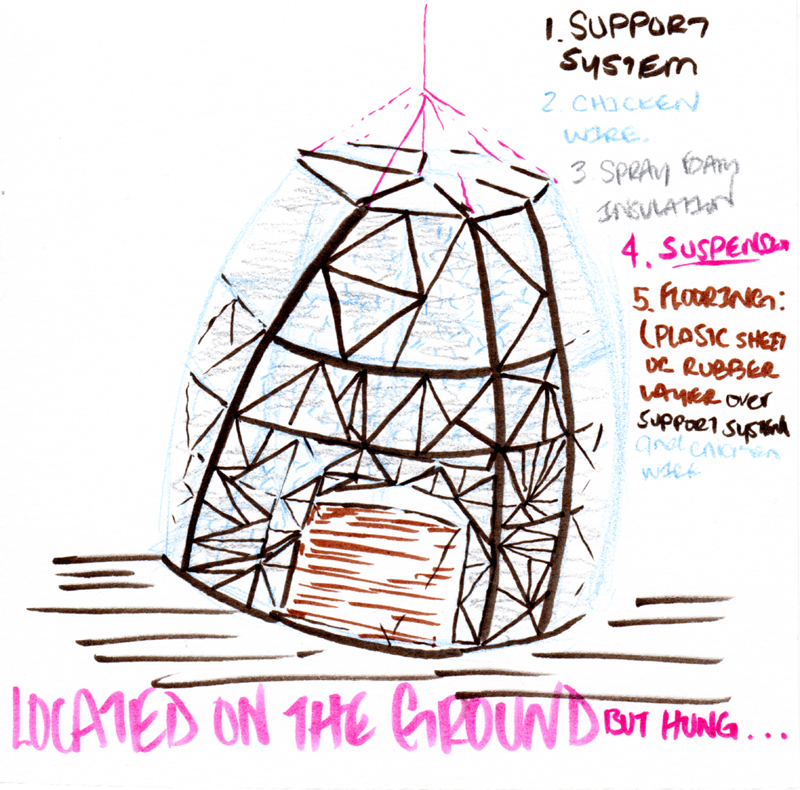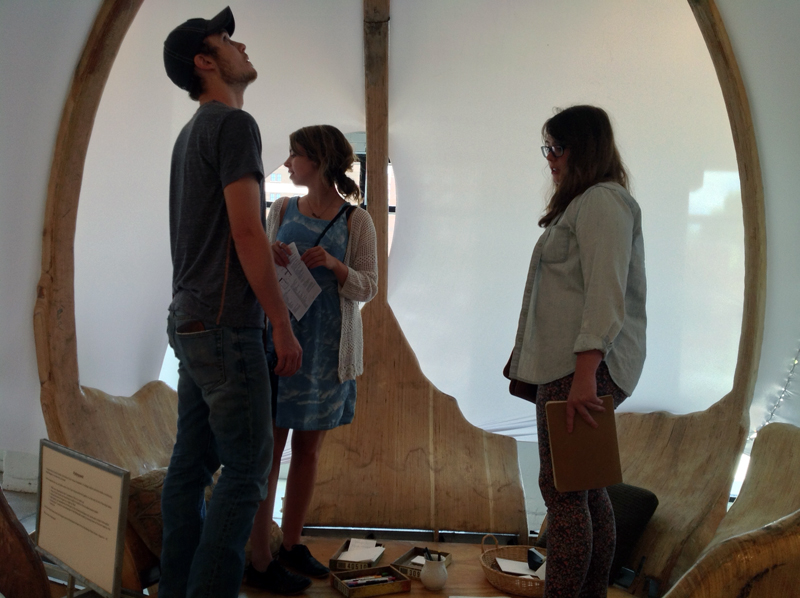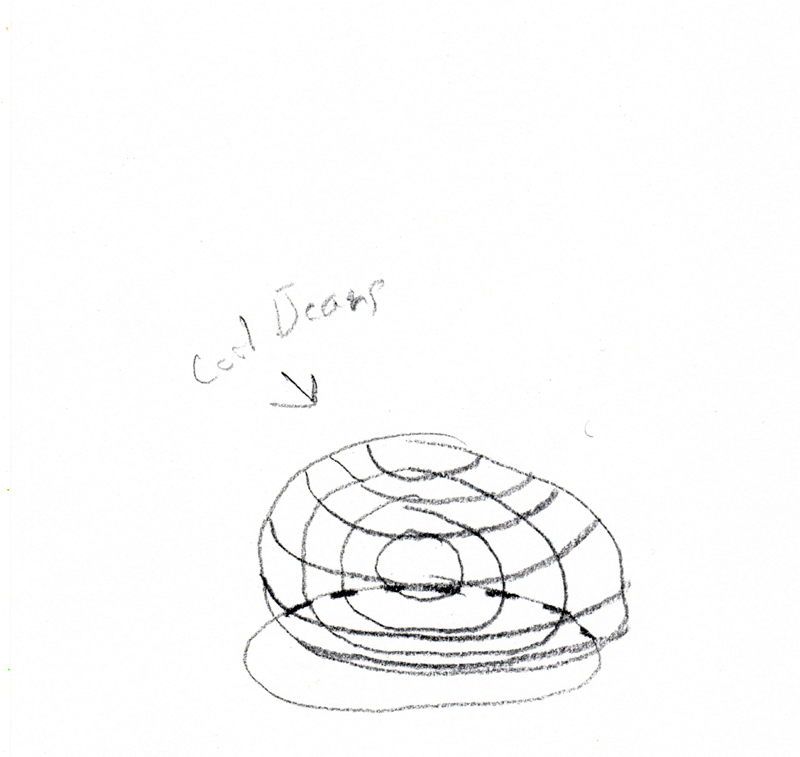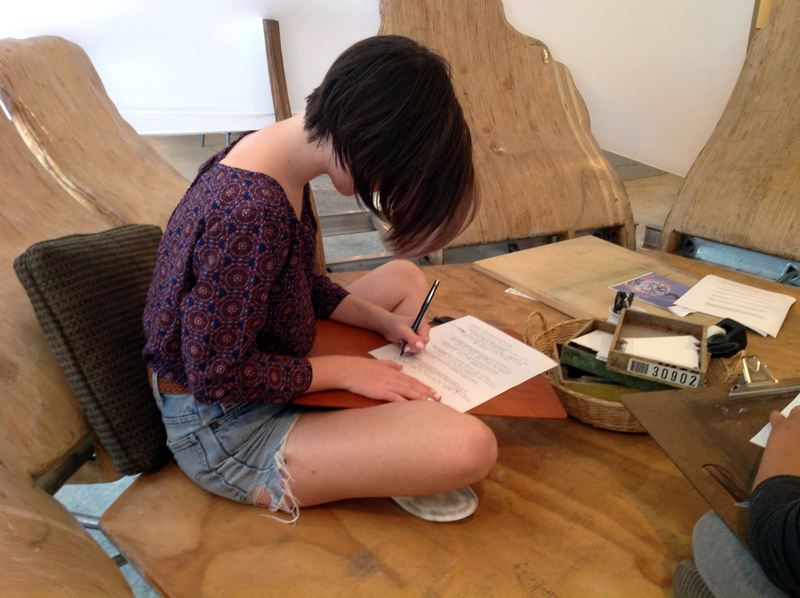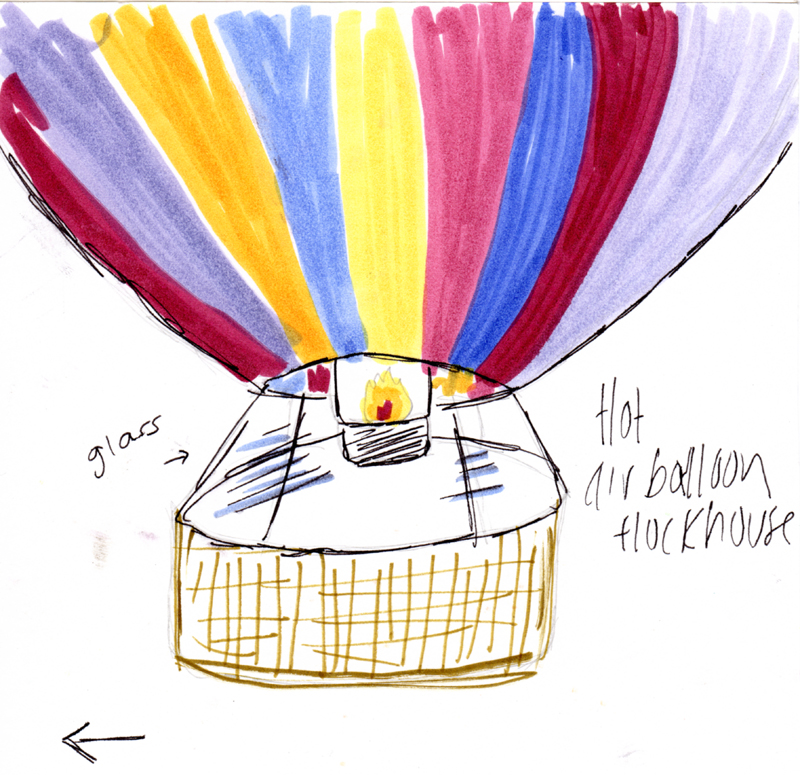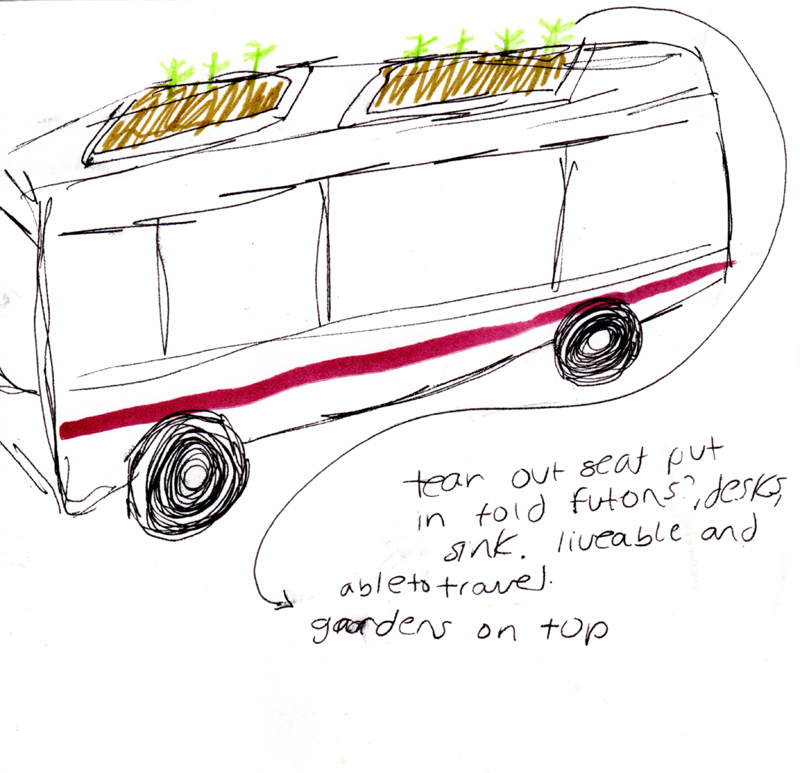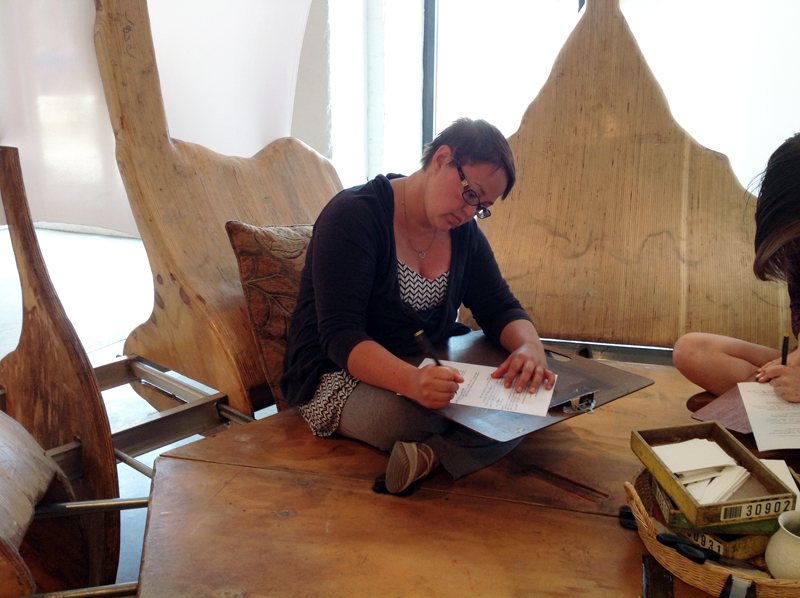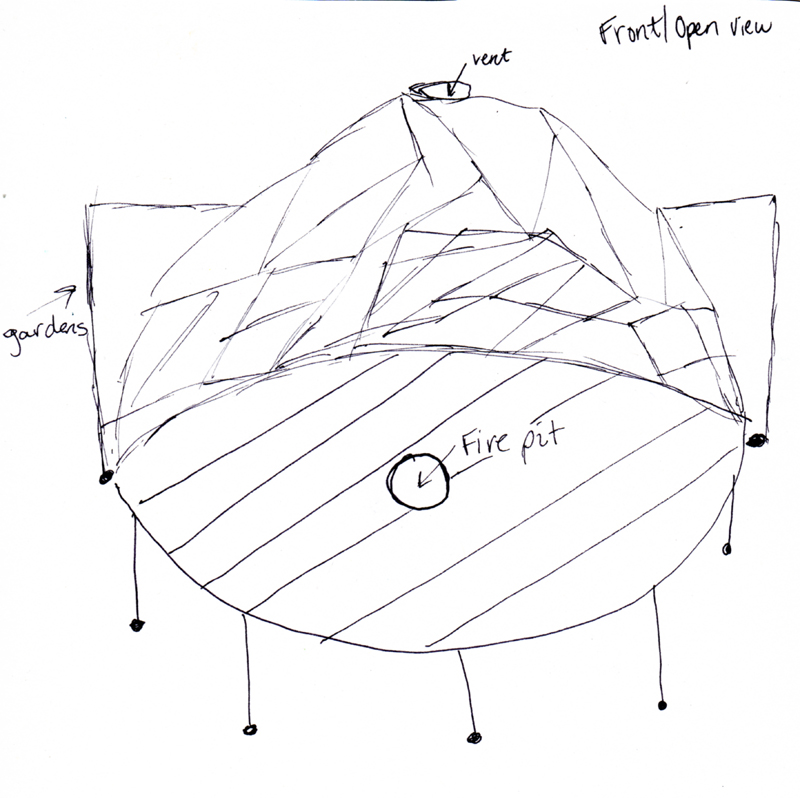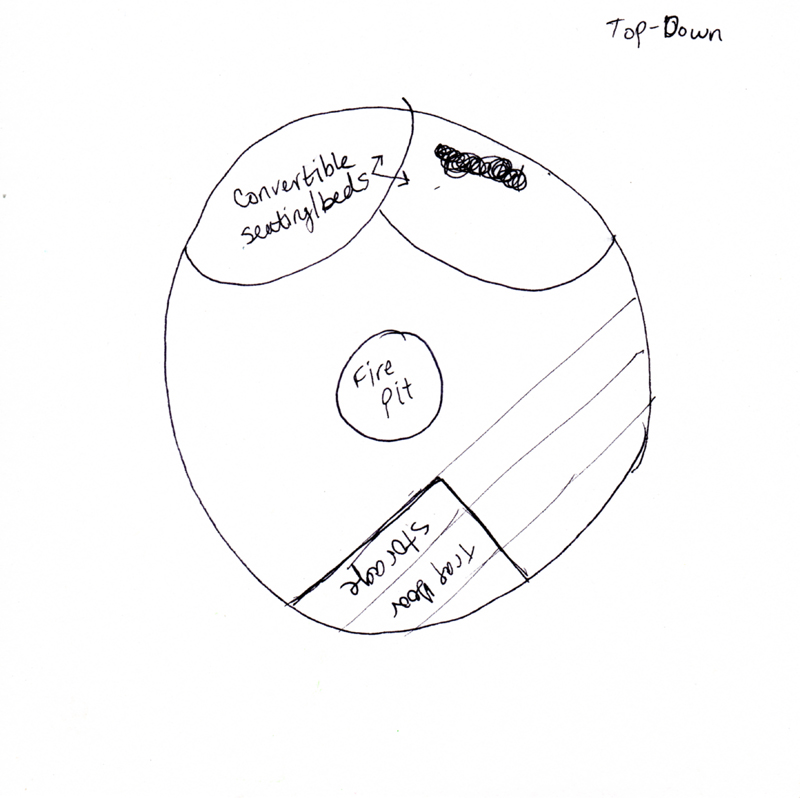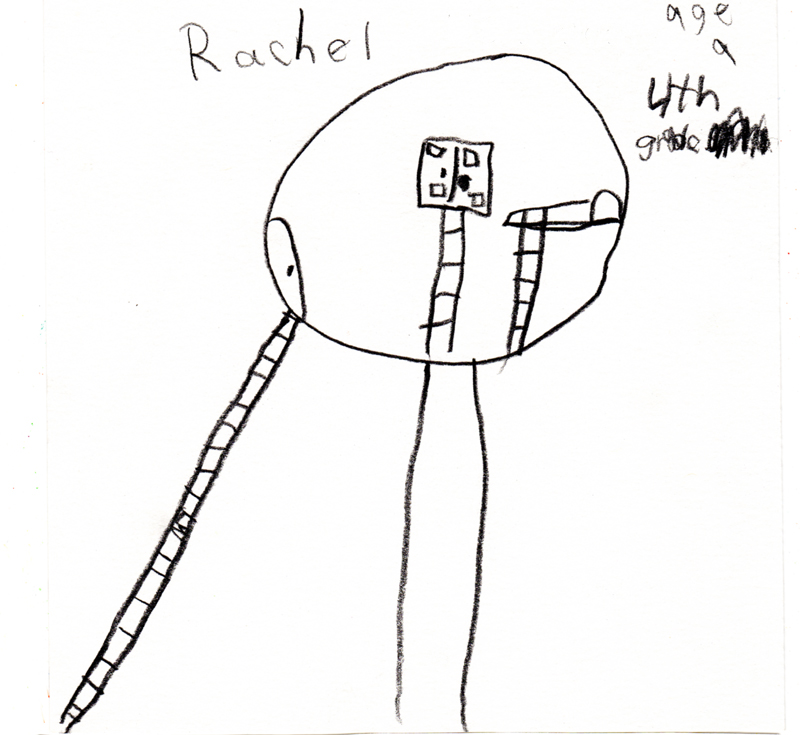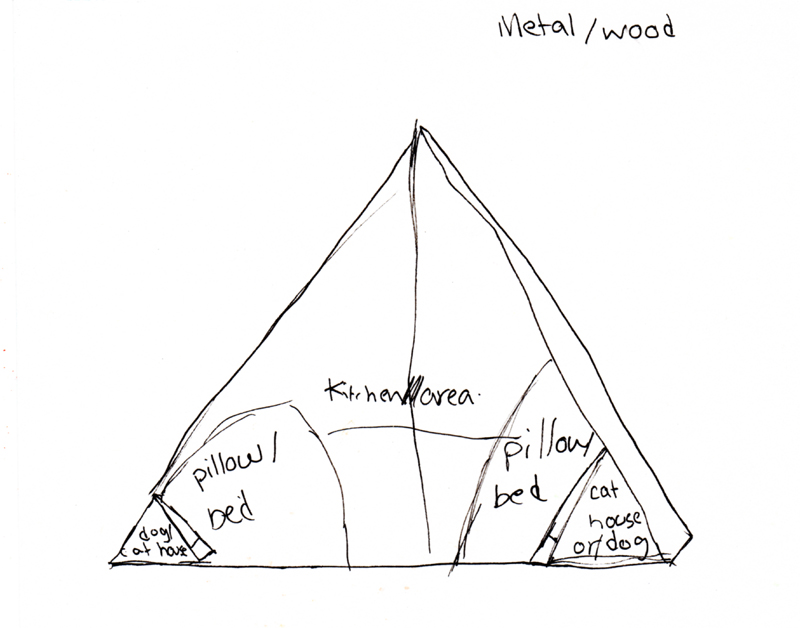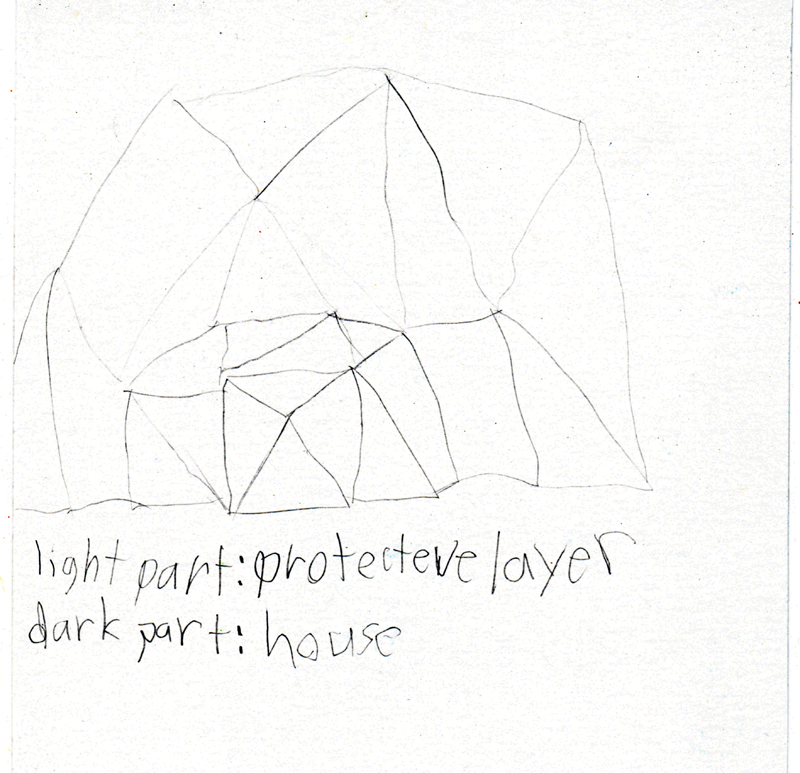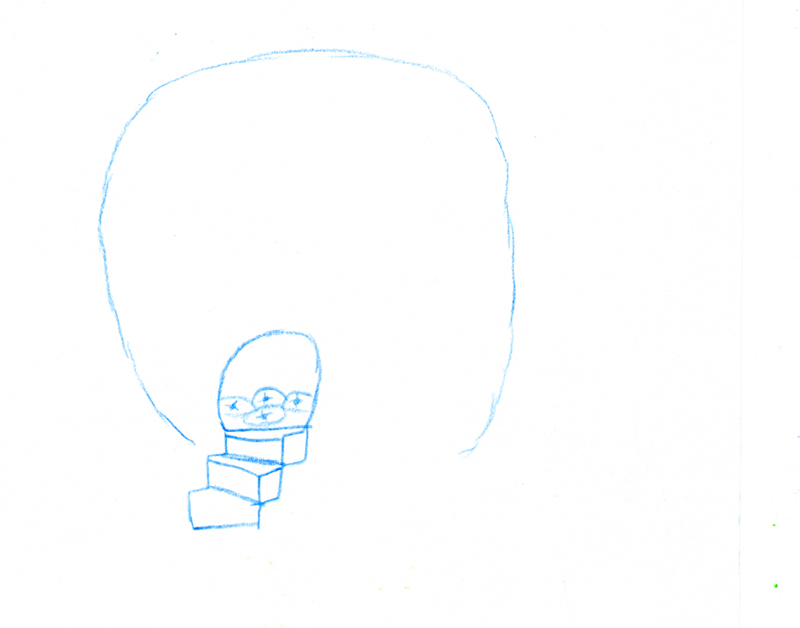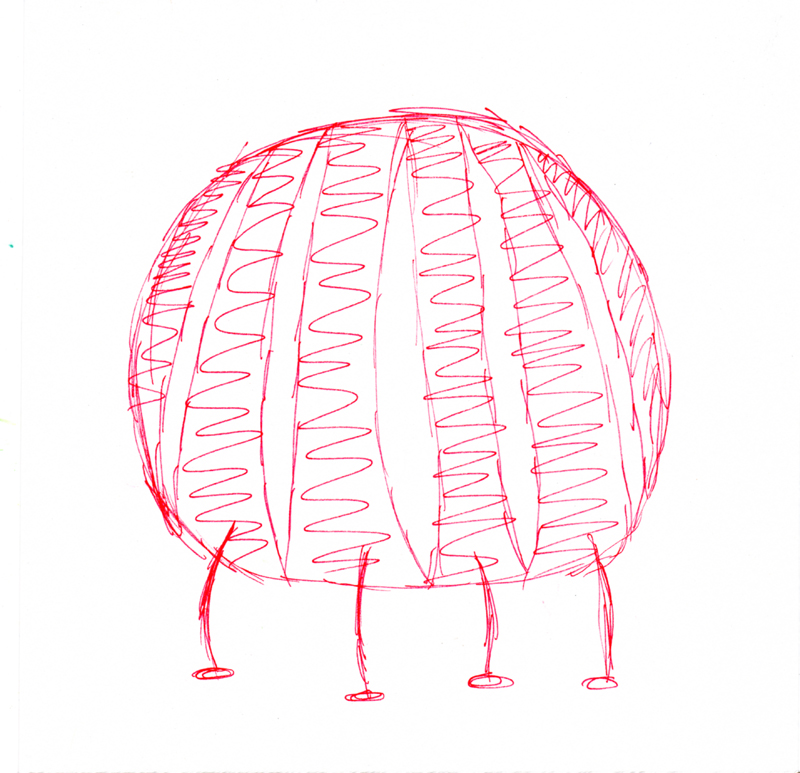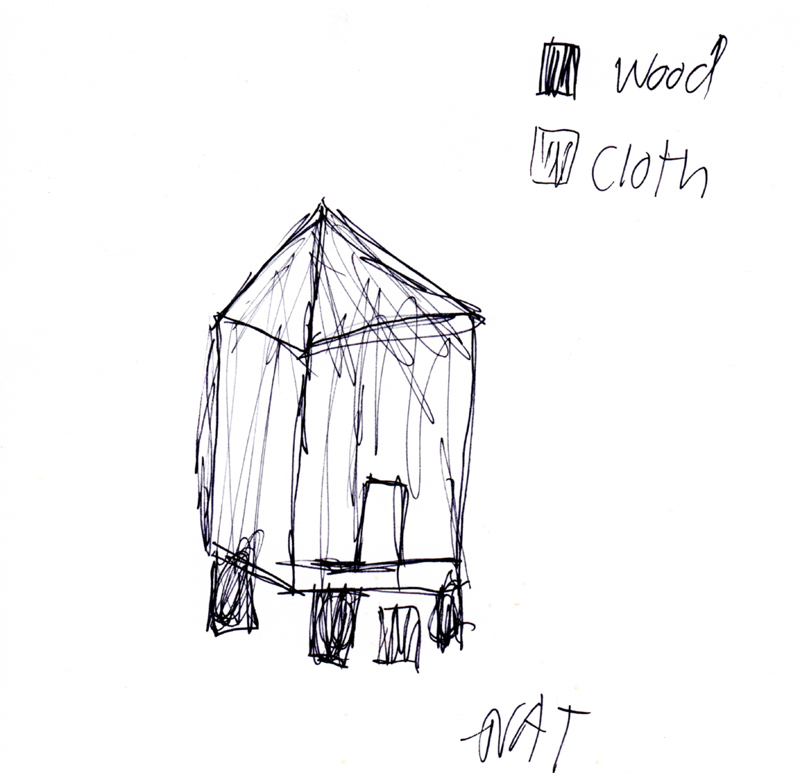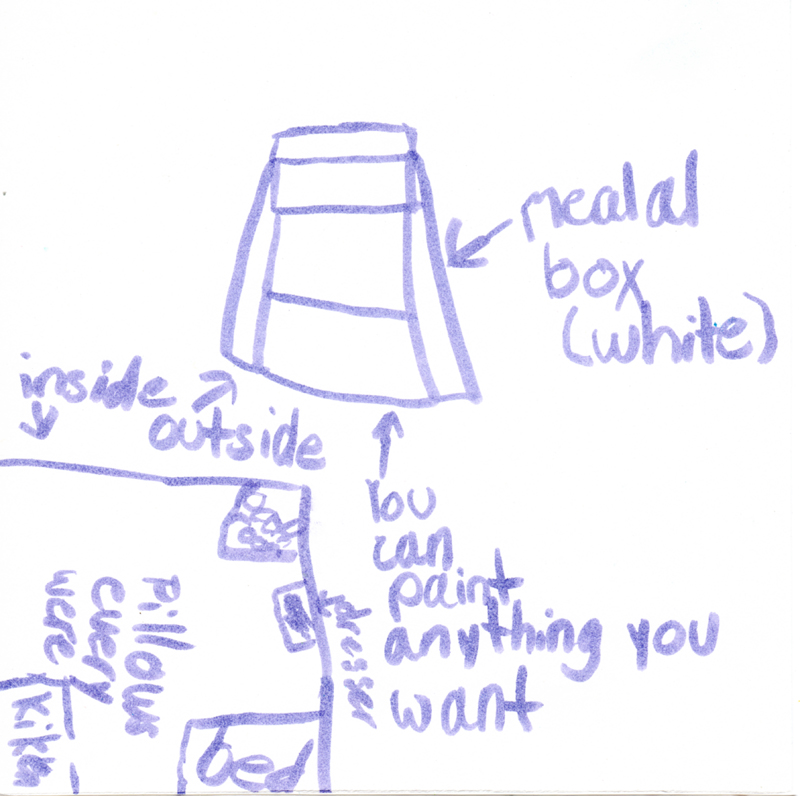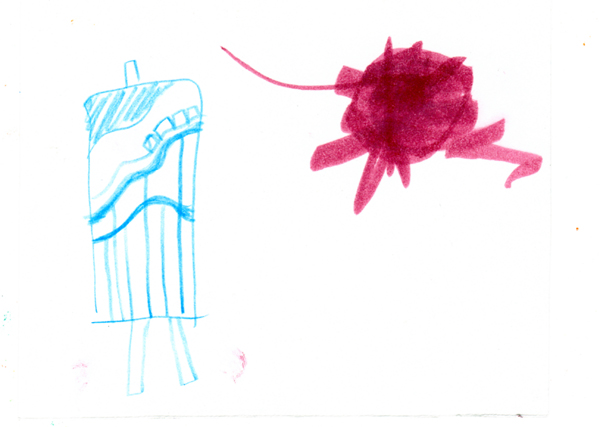“Big Top Tent” like shape
Seeing the NYC Flock House, Lizzy Davis wrote, “I thought of a raft, a weightless structure that is meant to always move. I believe the focus on the individual, the temporary nature of the project, and the focus on creator, undermines the environmental aspect by creating a space for those who already have a space.” Lizzy adds, “In a sustainable environment, I would think that the space should function as a necessity and for multiple persons/be in a place of permanence.”
Staying in a Flock House “would make an interesting substitute from a tent to a cabin. I would like to spend several days working in one.” Lizzy lists several ways to equip a Flock House with necessities. “Human powered machines (like the idea of a crank flashlight). As for water, it would almost be impossible to collect enough water from rain, which makes it entirely dependent on an existing water source.”
Recycled materials might be “used furniture, recycled/old clothes, melted down recycled aluminum.” “As an animator, I could provide video models of the finished product, as well as help with sewing and wood shop skills for cutting large materials.”
If Flock Houses migrated to a place, Lizzy says “No-” to attending. “- at least not without a plan. I would need to help set up a waste removal system, a schedule to have everyone rotate “chores”, and make sure not to disturb the area around the group.”
To the role of Flock House as response to disaster, Lizzy writes, “A flock house seems like a good idea in underdeveloped and overpopulated areas. For instance, the Gaza Strip, where thousands lack citizenship and are targets of hatred through violence. These houses would show 1) how little it takes to provide comfort and 2) shelter from terrible conditions these people live in.”
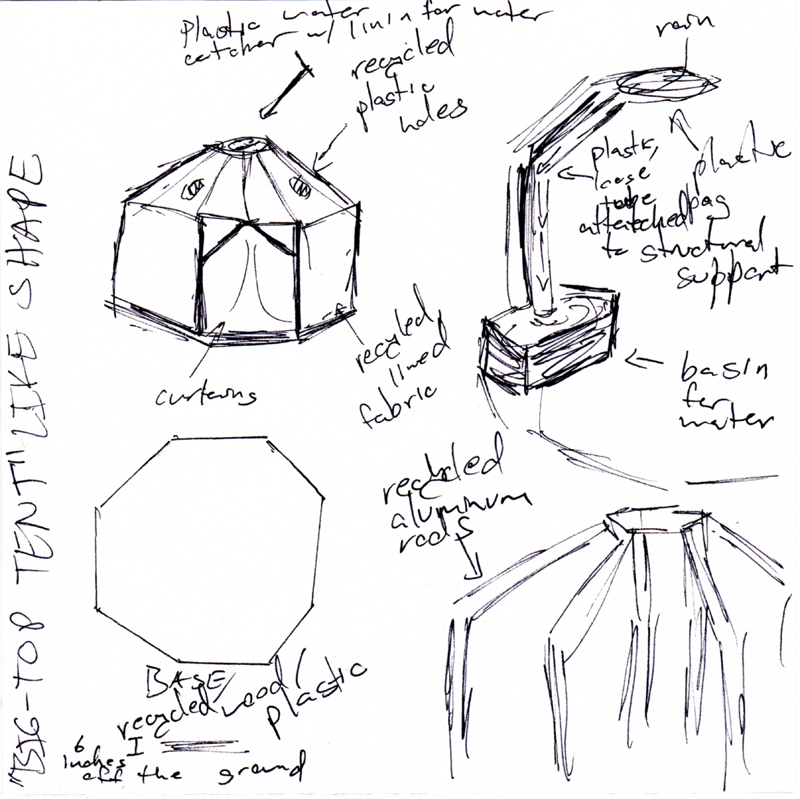
Lizzie Davis, “Big Top Tent” like shape
Details in the drawing focus on
Water capture: plastic liner for rooftop capture. Inside the structure a plastic hose carries water along structural supports to a basin for water storage.
The big tent structure supported with aluminum rods.
The octagonal base of recycled wood/plastic, 6 inches off the ground.
Recycled fabric sides, curtains at entry and recycled plastic holes in the roof.
